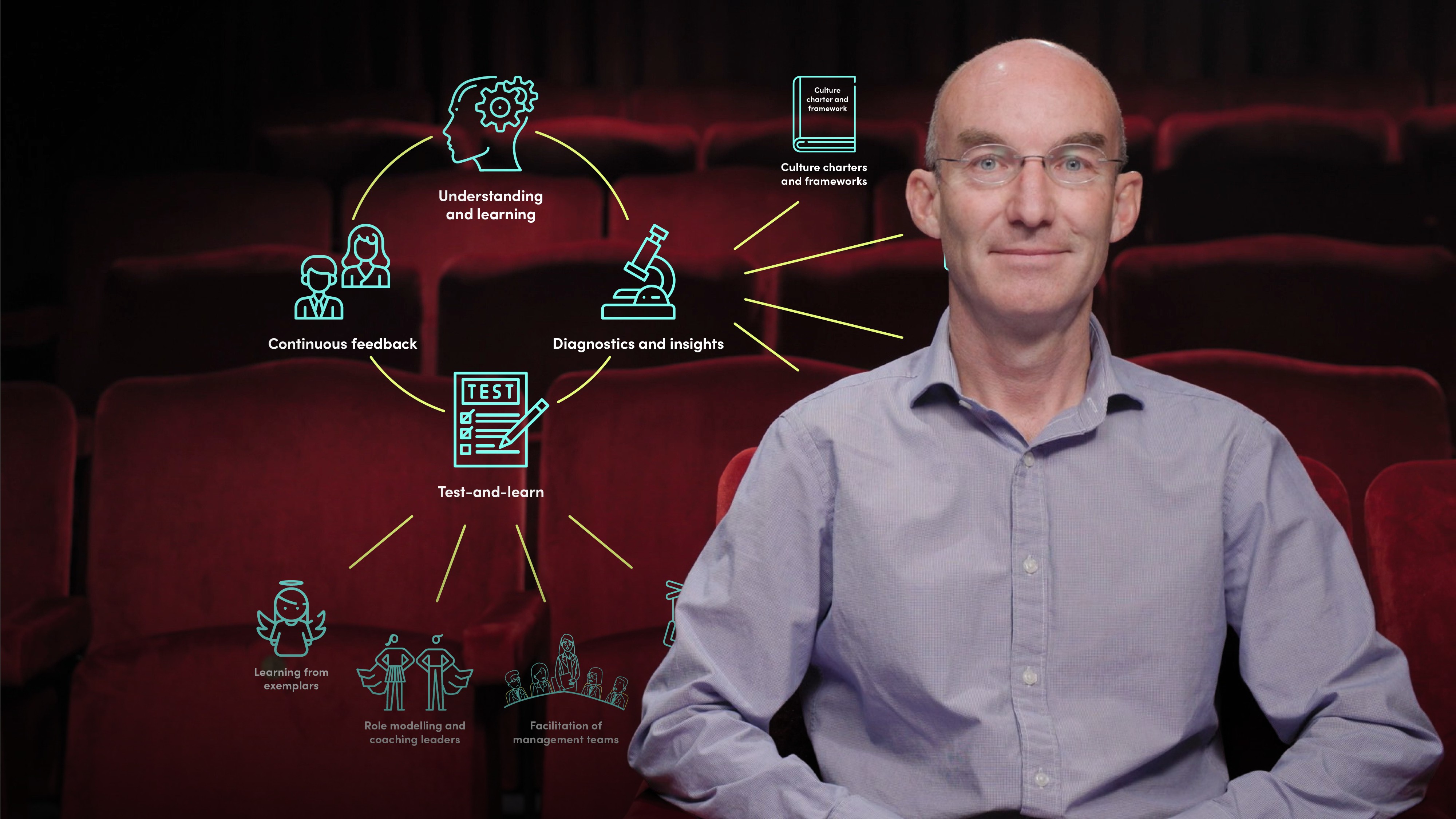
Implementing Culture Change in an Organisation

Roger Noon
25 years: Behavoural science & culture
In this video, Roger will look at concrete steps to influence change, and he’ll demonstrate how the three lines of defence can collaborate and work together to improve culture.
In this video, Roger will look at concrete steps to influence change, and he’ll demonstrate how the three lines of defence can collaborate and work together to improve culture.

Implementing Culture Change in an Organisation
11 mins 23 secs
Key learning objectives:
Identify concrete steps to influence change
Identify how the three lines of defence can collaborate and work together to improve culture
Overview:
Once an activity, such as a culture deep dive has taken place, we will need to take steps to influence change. This change, however, needs to be guided, there is no gain in telling a manager they have a culture problem without suggesting possible solutions.
How can we influence change?
Through the previous videos, we have built a very clear picture of the state of a subculture - our forensic analysis has connected the visible behaviours, strengths and issues with underlying belief systems, prevailing attitudes and local environmental context. We’ve also synthesised generic and useful insights from surveys, questionnaires and interviews, and we have started to generate a level of expectation for change. We now need to tap into this momentum and follow up with a tangible action.
It is suggested that cross hierarchy working groups are formed and actively facilitated by people with the right competencies to help the group and their management design change based on quick wins (e.g. changing the way promotions are run) and longer-term projects (e.g. updating a KYC process).
How can we incorporate cultural assessments into strategic thinking?
Culture assessments can be used as a forward-looking tool to assess the cultural impact of strategic change as part of a formal strategy planning process. The key benefit of this is that we are thinking proactively and getting ahead of any potential issues and unintended consequences.
Strategic decisions change the direction and focus of a business, decisions that are made without awareness of their impact can drive behaviours that are not intended, nor in sync with the direction the company is intending to move. A cultural impact assessment of strategic intent recognises this and can encourage alignment whilst pre-empting and mitigating negative effects.
How can we leverage the three lines of defence?
One of the criticisms of the three lines of defence model is that in practice, it creates duplication and inefficiency due to the different lines operating in a silo. We need the three lines to collaborate around the use of a common set of tools and techniques and to share cultural information and insights.

Roger Noon
There are no available Videos from "Roger Noon"

